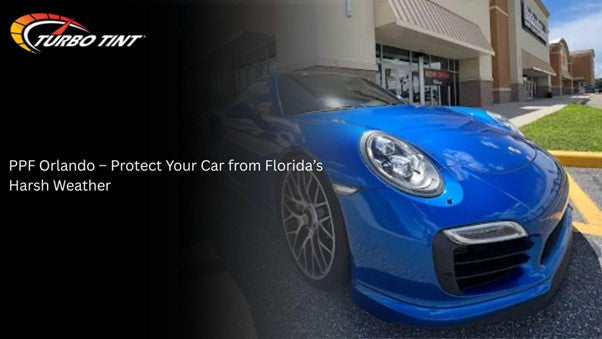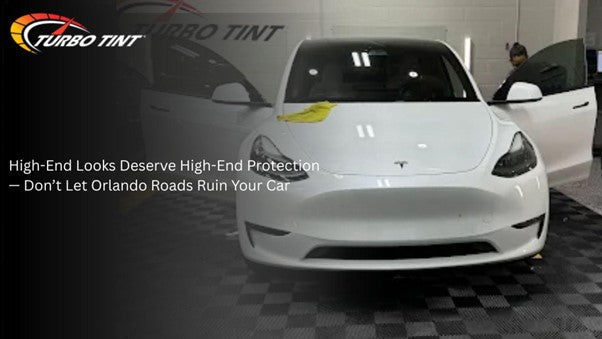Which Window Tint Percentage Is Ideal for Your Vehicle?
When it comes to window tinting for your vehicle, one of the most critical decisions you'll make is choosing the right tint percentage. Window tint not only enhances the aesthetics of your car but also provides several practical benefits such as UV protection, heat reduction, and increased privacy.
However, selecting the ideal window tint percentage is a decision that should be based on your specific needs, local regulations, and personal preferences.
In this comprehensive guide, we'll explore the different window tint percentages, their advantages, and how to make the best choice for your vehicle.
Understanding Window Tint Percentages
Window tint percentage refers to the amount of light that the tint film allows to pass through. It is typically measured as Visible Light Transmission (VLT), represented as a percentage.
For example, if a window tint has a VLT of 50%, it means that it allows 50% of visible light to pass through while blocking the remaining 50%. Different percentages offer varying degrees of tint darkness and light transmission.
Here are some common window tint percentages and what they mean:
- 5% Tint: Often referred to as "limo tint" or "full tint," this is the darkest tint available. It allows only 5% of visible light to pass through, providing maximum privacy and heat reduction. However, it can significantly reduce visibility at night and may not be legal in many states.
- 20% Tint: This level of tint allows 20% of visible light to pass through. It provides good privacy and heat reduction while maintaining reasonable visibility both day and night.
- 35% Tint: A popular choice, 35% tint allows 35% of visible light to pass through. It strikes a balance between privacy, heat reduction, and visibility. This percentage is often legal in many states.
- 50% Tint: Allowing 50% of visible light to pass through, this tint offers a moderate level of privacy and heat reduction while maintaining excellent visibility day and night. It is typically legal in most states.
- 70% Tint: This is a light tint that allows 70% of visible light to pass through. It offers minimal privacy and heat reduction but provides the best visibility both day and night. It is usually legal in all states.
Factors to Consider
Legal Regulations
Before choosing a window tint percentage, it's crucial to research your local and state regulations regarding window tinting.
Each state has its own laws governing the allowable tint percentages for different windows, including front, rear, and side windows. Going beyond the legal limit can result in fines and the requirement to remove the tint.
Purpose
Consider why you want window tinting for your vehicle. Are you primarily looking to enhance privacy, reduce heat, block UV rays, or improve the aesthetics of your car? Your purpose will influence the ideal tint percentage for your needs.
Climate
Your local climate plays a significant role in determining the appropriate tint percentage. If you live in a hot and sunny area, you might benefit from a darker tint to reduce heat.
In contrast, those in colder climates may prefer a lighter tint for better visibility during overcast days and at night.
Nighttime Visibility
Dark window tint can significantly reduce visibility at night, especially in poorly lit areas. If you frequently drive at night or in areas with limited street lighting, a lighter tint may be a safer choice.
Personal Preference
Ultimately, your personal preference matters. Some people prefer the sleek, dark look of heavily tinted windows, while others prioritize visibility and a more subtle tint.
Making the Right Choice
To determine the ideal window tint percentage for your vehicle, start by considering your primary objectives. If heat reduction and UV protection are your top priorities, you might opt for a darker tint.
If you value excellent visibility day and night, a lighter tint is a better choice. Remember to check your local regulations to ensure compliance.
It's also essential to have your window tint installed by a professional. Professional installation ensures that the tint is applied correctly, minimizing the risk of bubbles, creases, and imperfections that can affect both appearance and functionality.
In conclusion
The ideal window tint percentage for your vehicle depends on a combination of legal regulations, your purpose, climate, nighttime visibility needs, and personal preference.
By carefully considering these factors and consulting with a professional, you can choose the perfect tint percentage that enhances the look and functionality of your vehicle while keeping you safe and compliant with the law.
And when you're ready to take that step, remember that Turbo Tint Orlando is here to provide expert window tinting solutions, supported by a lifetime warranty, ensuring your confidence in our top-notch services.





